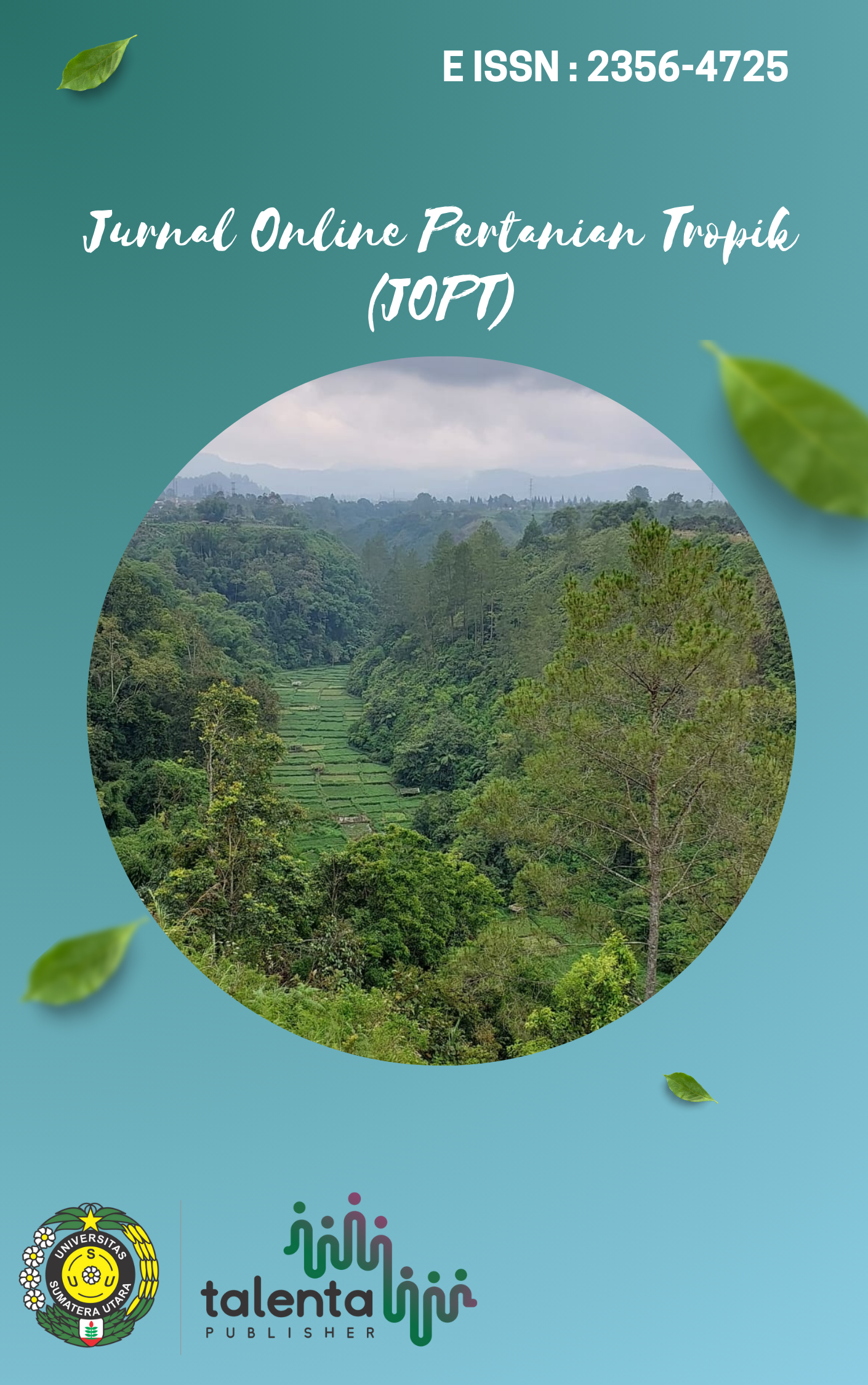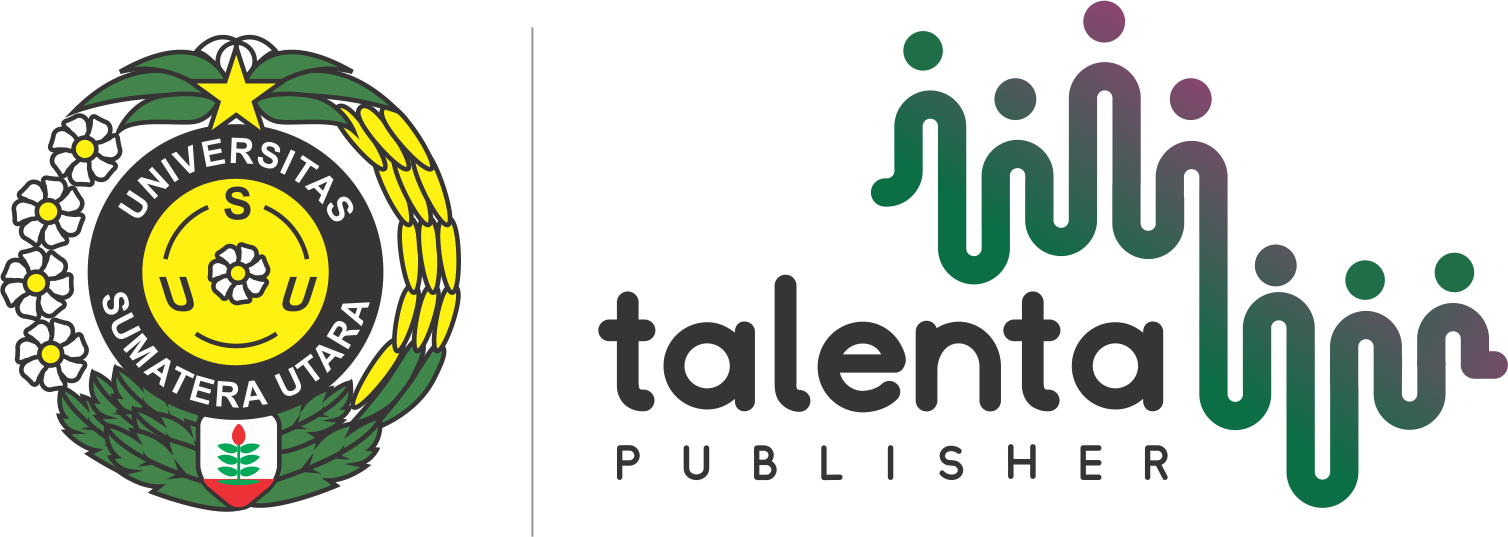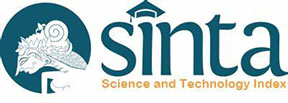Impact of Bioameliorants and Trichoderma sp. on Nutrient Availability, Plant Immunity, and Red Chili Productivity.
DOI:
https://doi.org/10.32734/jpt.v12i2.16905Keywords:
attack intensity, microbes, organic matter, Plant ImmunityAbstract
The low productivity of chili plants needs to be increased through soil fertility and pest and disease control. The application of bioameliorants (50% biochar, 25% sugarcane blotong compost, 10% dolomite, 10% guano, 2.5% humic acid, and 2.5% biofertilizer) aims to improve the physical, chemical, and biological properties of the soil and enhance nutrient availability. Trichoderma sp. is needed to stimulate growth and induce resistance. The research aims to determine the best interaction and dosage of bioameliorants and Trichoderma sp. on the parameters of phosphate-solubilizing bacteria, available P, plant height, number of leaves, fruit weight, number of fruits per plant, and induced resistance. The research was conducted at the Bale Tatanen Experimental Garden of the Faculty of Agriculture, Universitas Padjadjaran. The research used a Randomized Block Design (RBD) factorial with nine treatments and three repetitions. The treatments included bioameliorants at 0 t ha-1, 3 t ha-1, 6 t ha-1 and Trichoderma sp. at 0 kg ha-1, 8 kg ha-1, and 16 kg ha-1. The results of the application of bioameliorants and the biological agent Trichoderma sp., as well as the control treatment, showed no interaction between treatments. The application of bioameliorants and biological agents showed the best dose in the independent effect of bioameliorant at 6 t ha-1, which increased available P by 86.6% compared to the control. The application of Trichoderma sp. showed the best dose at 16 kg ha-1, which reduced the intensity of leaf curl virus disease by 66.6% compared to the control and reduced the intensity of fruit fly pest attacks at 16 kg ha-1 by 20.5% compared to the control.
Downloads
References
[BPS] Badan Pusat Statistik. 2022. Produksi Tanaman Sayuran 2022.
Arifin, Z., Susilowati, L.E., Kusumo, B.H., & Mas’hum, M. (2021). Potensi pupuk hayati fosfat dalam mengefisiensi penggunaan pupuk p- anorganik pada tanaman jagung. Prosiding Saintek LPPM Universitas Mataram 3, 9–10.
Arsi, A., Resita, R.S., Gunawan, B., Herlinda, S., Pujiastuti, Y., Suwandi, I.C., Hamidson, H., Efendi, R.A., & Budiarti, L. (2020). Pengaruh teknik budidaya terhadap serangan penyakit pada tanaman cabai rawit (Capsicum frutescens L.) di kecamatan lempuing, kabupaten ogan komering ilir. Planta Simbiosa, 2(1).
Alori, E. T., Glik, B. R., & Babalola, O. O. (2017). Microbial phosphorus solubilization and its potential for use in sustainable agriculture. Frontiers in Microbiology, 8, 1–8.
Cai, F., Chen, W., Wei, Z., Pang, G., Li, R., Ran, W., & Shen, Q. (2015). Colonization of Trichoderma harzianum strain SQR-T037 on tomato roots and its relationship to plant growth, nutrient availability and soil microflora. Plant Soil, 338, 337–350.
Dedik, I. M., & Gusti N. A. (2017). Efektifitas pemberian kompos Trichoderma sp. terhadap pertumbuhan tanaman cabai (Capsicum Annum L.). E-Jurnal Agroekoteknologi Tropika, 6(1), 22–30.
Devendra, K., Choudhary, Anil, P., & B.N. Johri. (2007). Induced systemic resistance (ISR) in plants: mechanism of action. Indian J. Microbio, 47, 289–297.
Elita, N., Harmailis, H., Erlinda, R., & Susila, E. (2021). Pengaruh aplikasi Trichoderma spp. Indigenous terhadap hasil padi varietas junjuang menggunakan system of rice intensification. Jurnal Tanah dan Iklim, 45(1), 79. https://doi.org/10.21082/jti.v45n1.2021.79-89
Eslahi, N., M. Kowsari, M. Motallebi, M. R. Zamani, & Z. Moghadasi. (2019). Influence of recombinant Trichoderma strains on growth of bean (Phaseolus vulgaris L.) by increased root colonization and induction of root growth related genes. Scientia Horticulturae. 261(2020): 108932. https://doi.org/10.1016/j.scienta.2019.108932.
Fitria, E., Kesumawaty, E., & Bakhtiar. (2018). Pengaruh varietas dan pemberian berbagai dosis pelet Trichoderma harzianum terhadap produksi cabai (Capsicum annum L.). J. Floratek, 13(1), 49–57.
Fitriatin, B. N., Amanda, A. P., Kamaluddin, N. N., Khumairah, F. H., Sofyan, E. T., Yuniarti, A., & Turmuktini, T. (2021). Some soil biological and chemical properties as affected by biofertilizers and organic ameliorants application on paddy rice. Eurasian Journal of Soil Science, 10(2), 105–110. https://doi.org/10.18393/ejss.829695
Fitriatin, B. N., Manurung, D. F., Sofyan, E. T. S. & Setiawati, M. R. (2020). Compatibility phospahe solubility and phospahatase activity by phosphate solubilizing bacteria. Haya Saudi J Life Sci, 5(12), 281-284.
Halimah, N., & Fifi, P. (2017). Induksi ketahanan dan pertumbuhan bibit kelapa sawit dengan bahan penginduksi berbeda jamur Trichoderma virens endofit terhadap penyakit busuk batang atas. Jom Faperta, 4(2).
Kurniastuti, T., & Puspitorini, P. (2021). Respon tanaman cabai rawit (Capsicum frutescens L.) terhadap aplikasi Trichoderma sp. pada beberapa media tanam. Agrika, 15(2), 79. https://doi.org/10.31328/ja.v15i2.2598
Hidayat, C., Rachmawati, Y. S., Herlina, N., & Hasani, S. (2023). Pemanfaatan bokhasi paitan (Tithonia diversifolia) dan bakteri pelarut fosfat dalam budidaya tanaman jagung pada tanah pasca penambangan batuan. Agrosainstek: Jurnal Ilmu dan Teknologi Pertanian, 7(1), 25–31. https://doi.org/10.33019/agrosainstek.v7i1.383
Hutamy, B.H. (2018). Diversitas dan populasi bakteri pelarut fosfat pada berbagai penggunaan lahan di ub forest. Universitas Brawijaya Fakultas Pertanian Malang.
Leovisi, H. (2012). Makalah Seminar. pemanfaatan blotong pada budidaya tebu (Saccharum officenarum, L) di Lahan Kering. Program Studi Agronomi. Jurusan Budidaya Pertanian. Fakultas Pertanian Universitas Gadjahmada Yogyakarta.
Meylia, R. D. & Koesriharti. (2018). Pengaruh pemberian pupuk fosfor dan sumber kalium yang berbeda terhadap pertumbuhan dan hasil tanaman tomat (Lycopersicon esculentum Mill). Jurnal Produksi Tanaman, 6(8): 1934 – 1941.
Novariza, D. A., Lubis, L., S, S. F., & Tistama, R. (2018). Eksplorasi dan karakterisasi mikroorganisme dari biji karet dan manfaatnya terhadap pertumbuhan tanaman karet (Hevea brassiliensis Muell Arg.). Angewandte Chemie International Edition 6(11), 951–952., 4(1), 1925–1936.
Nosheen, S., Ajmal, I., & Song, Y. (2021). Microbes as biofertilizers, a potential approach for sustainable crop production. Sustainability (Switzerland), 13(4), 1–20. https://doi.org/10.3390/su13041868
Oematan, S. S., Yosefina, R. Y., Gandut, Antonius S. S., Ndiwa, C. F. F., Higa, H. (2022). Pengaruh komposisi media tanam (perbandingan tanah, pupuk kandang, dan arang sekam) terhadap pertumbuhan dan hasil tanaman kangkung darat (ipomoea reptans poir). Jurnal Wana Lestari, 4(2), 314–322.
Qibtyah & Mariyatul. (2015). Pengaruh penggunaan konsentrasi pupuk daun gandasil D dan dosis pupuk guano terhadap pertumbuhan dan hasil tanaman cabai merah (Capsicum annum L.). Jurnal Saints, 7(2), 109–121.
Pandriyani & Supriyati, L. (2010). Pemberian dan waktu aplikasi cendawan antagonis Trichoderma sp. sebagai pengendali penyakit layu fusarium terhadap pertumbuhan dan hasil tanaman tomat. Jurnal Penelitian. Jurusan Budidaya Pertanian, Fakultas Pertanian Universitas Palangka Raya.
Polii, M. G. M., Sondakh, T. D., Raintung, J. S. M., Doodoh, B., & Titah, T. (2019). Kajian Teknik Budidaya Tanaman Cabai (Capsicum annuum L.) Kabupaten Minahasa Tenggara. Eugenia, 25(3), 73–77.
Poulton, J. L., Koide, K. G. & Sthephenson. A. G. (2011). The Effect of Trichoderma Infection and Soil Phosphorus Availability on Pollen Performance In Vivo in Lycopersicon esculentum (Solanaceae). American J. Botany, 88, 1786–1793.
Purwantisari, S., Priyatmojo, A., Sancayaningsih, R. P., & Kasiamdari, R. S. (2016). Masa inkubasi gejala penyakit hawar daun tanaman kentang yang diinduksi ketahanannya oleh jamur antagonis Trichoderma viride. Bioma: Berkala Ilmiah Biologi, 18(2), 41. https://doi.org/10.14710/bioma.18.2.41-47
Shahbaz, M. Z., Ikbal, A. Saleem, M. A. Anjun. 2009. Association of lasiodiplodia theobromae with different decline disorders in mango (Mangifera indica) L.). Pak J Bot, 41(1), 256–363.
Simarmata, T., Muhamad, K. P., Mieke, R. S., Kustika., A. & Silke, S. (2023). Bioameliorant ramah lingkungan untuk meningkatkan kesuburan tanah dan beras (Oryza sativa) produksi. Open Agriculture, 8 (1), 20220185.
Sinaga, J.E., Emma, T.S., & Tualar, S. (2018). Aplikasi amelioran organik terhadap populasi rhizobacteriadan status kecukupan hara (N, P, K) tanaman jagung (Zea mays L.) pada Inceptisols. Jurnal Agrotek Indonesia, 3(2), 137–141. https://doi.org/10.33661/jai.v3i2.1379
Situmorang, Y. E. G., Anne, N. & Tualar, S. (2019). Efek komposisi dan dosis amelioran terhadap sifat tanah dan hasil tanaman cabai (Capsicum annuum L.) pada Inceptisols. Jurnal Agrotek Indonesia, 4(1), 583-586. https://doi.org/10.33661/jai.v4i1.1280
Sonia, A. V & Tri, T. S. (2022). Aktivitas bakteri pelarut fosfat terhadap peningkatan ketersediaan fosfat pada tanah masam. Agrovigor: Jurnal Agroekoteknologi, 15(1), 44–53
Downloads
Published
How to Cite
Issue
Section
License
Copyright (c) 2025 Jurnal Online Pertanian Tropik

This work is licensed under a Creative Commons Attribution-ShareAlike 4.0 International License.






















